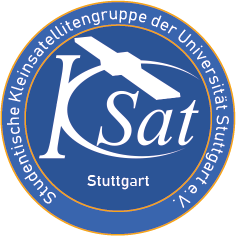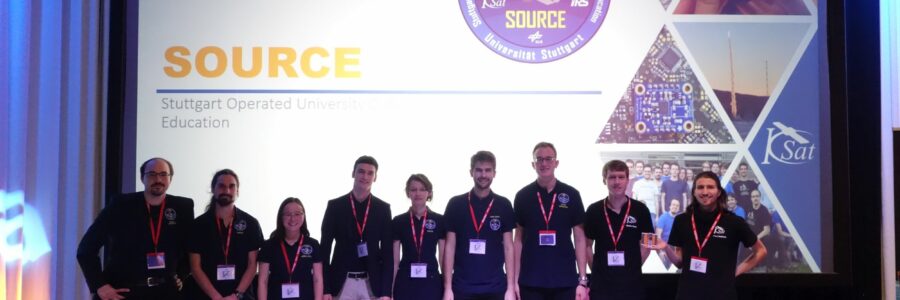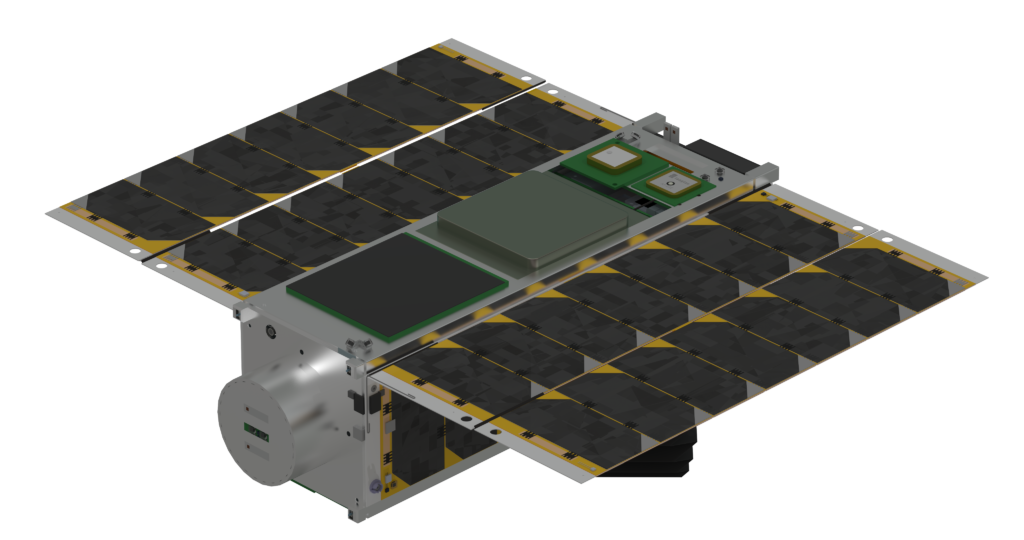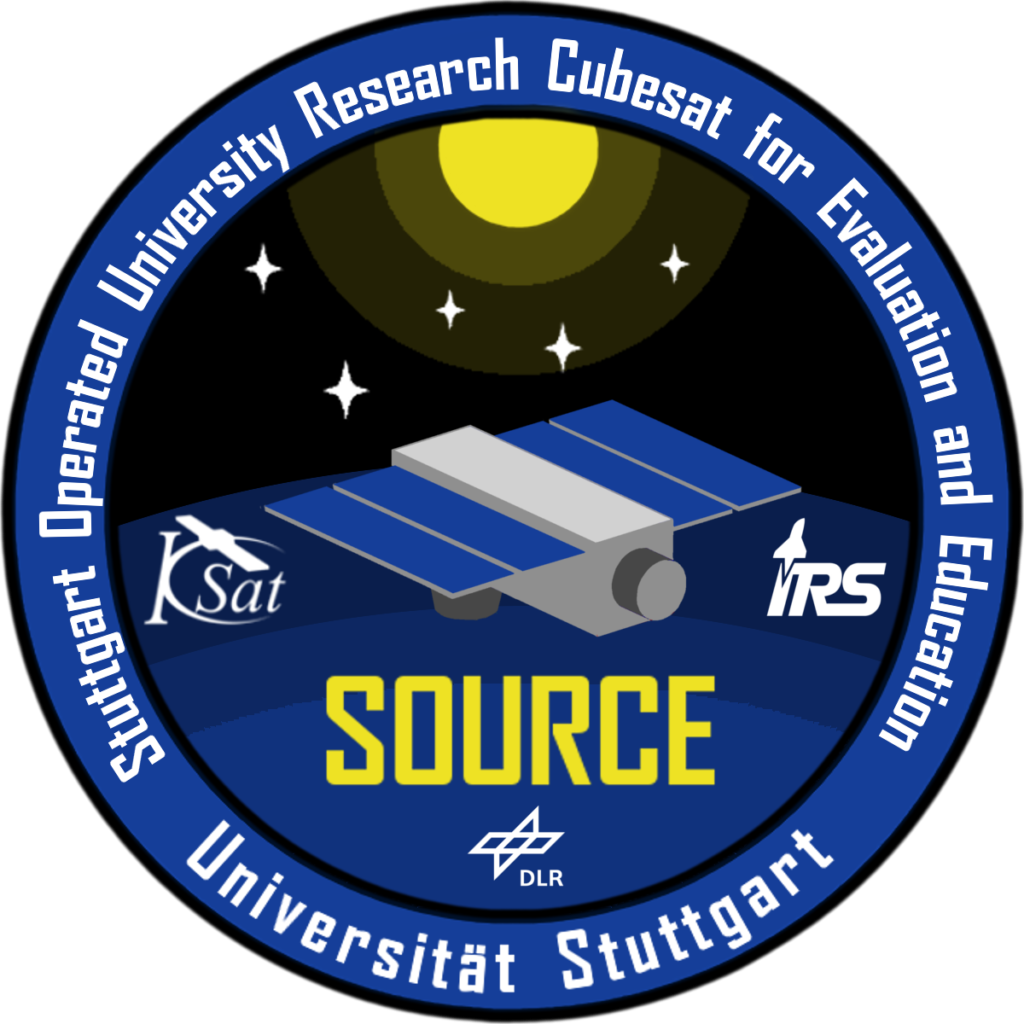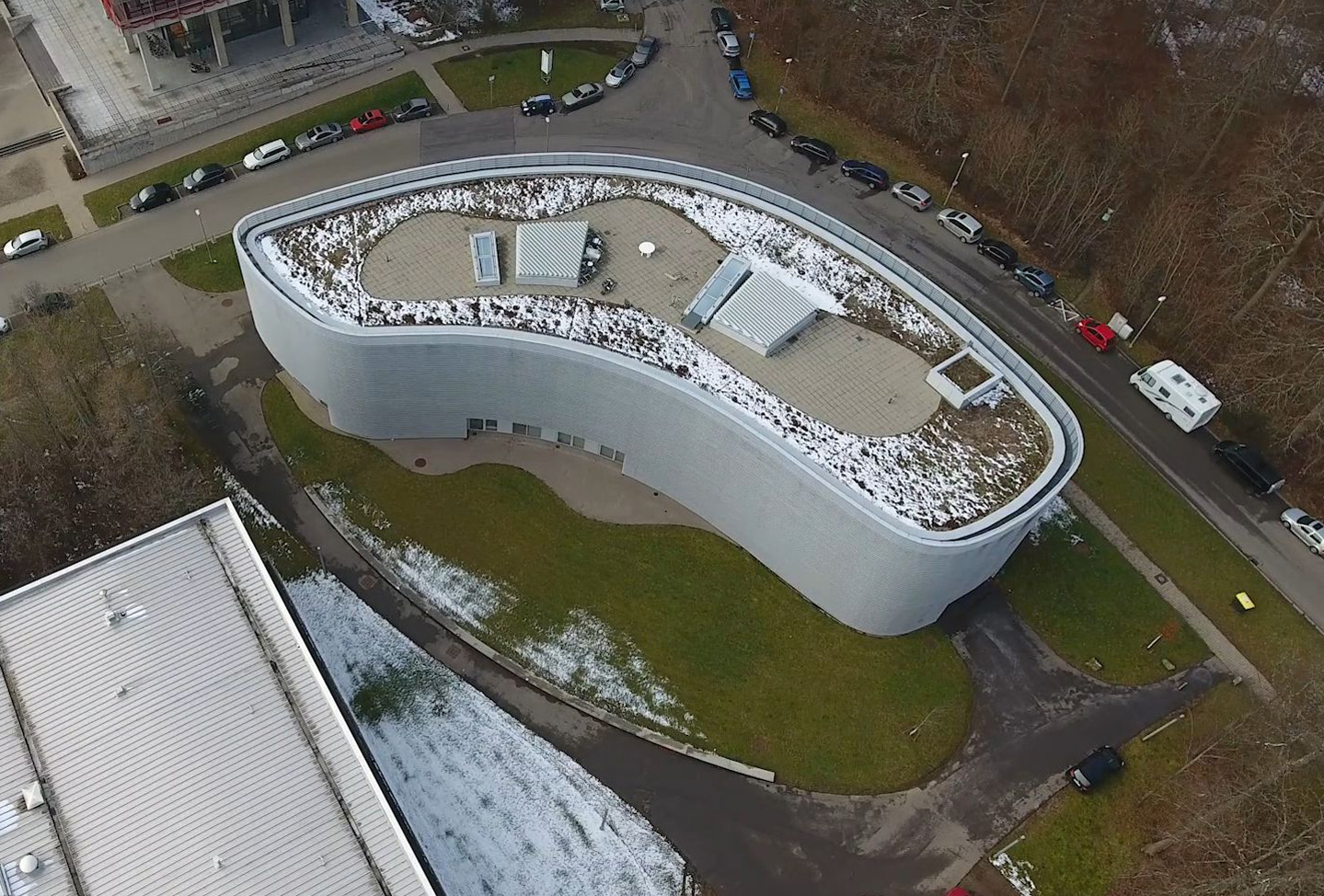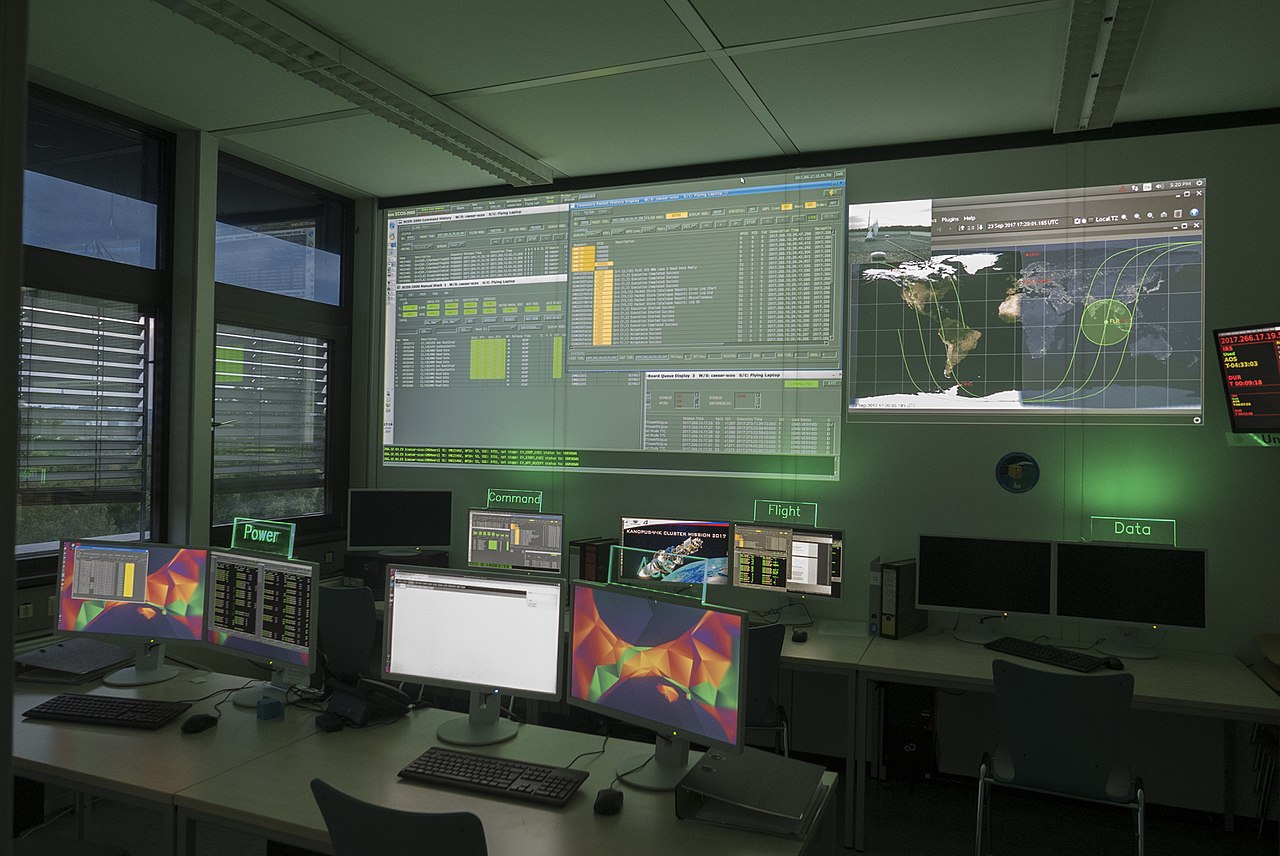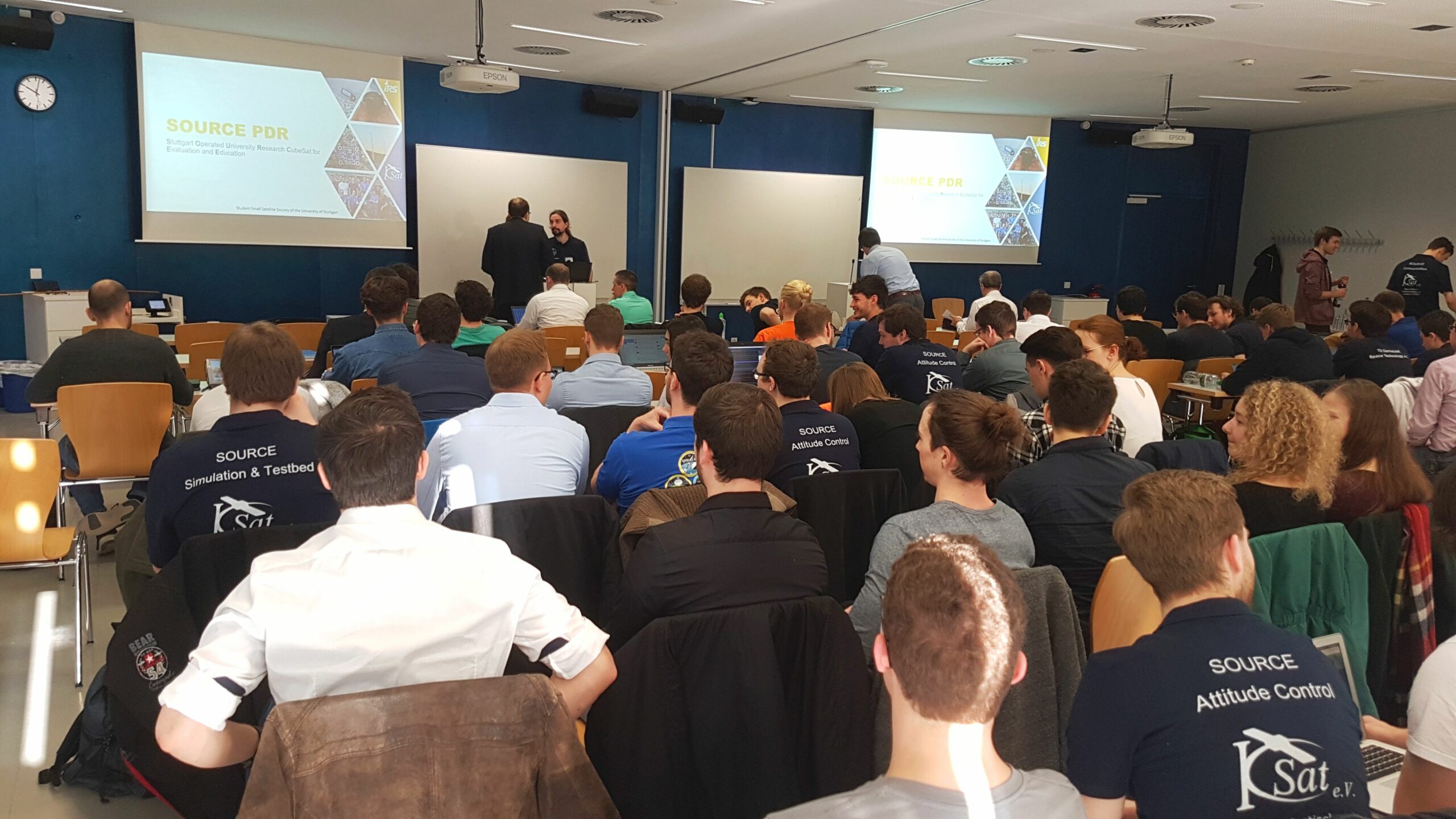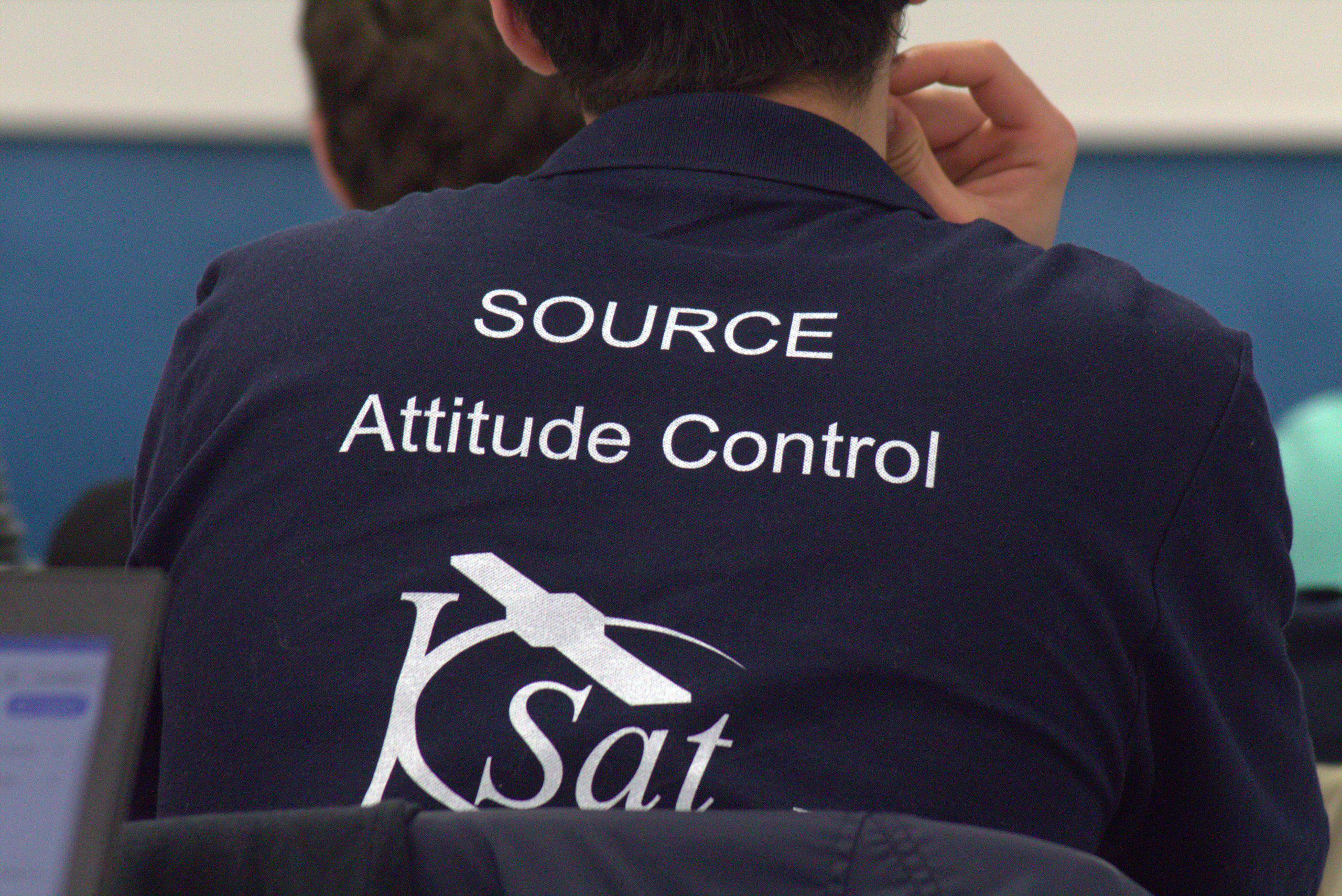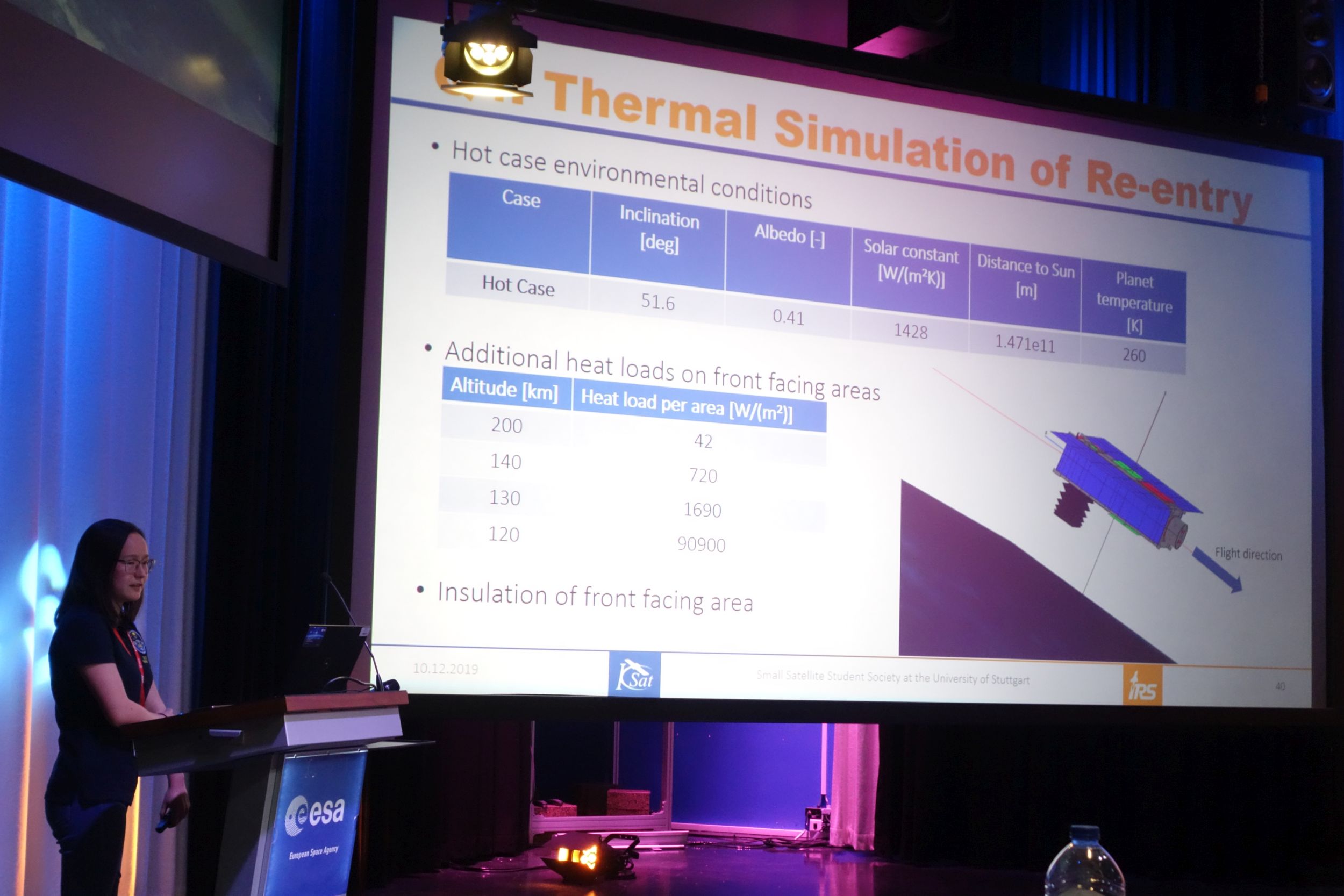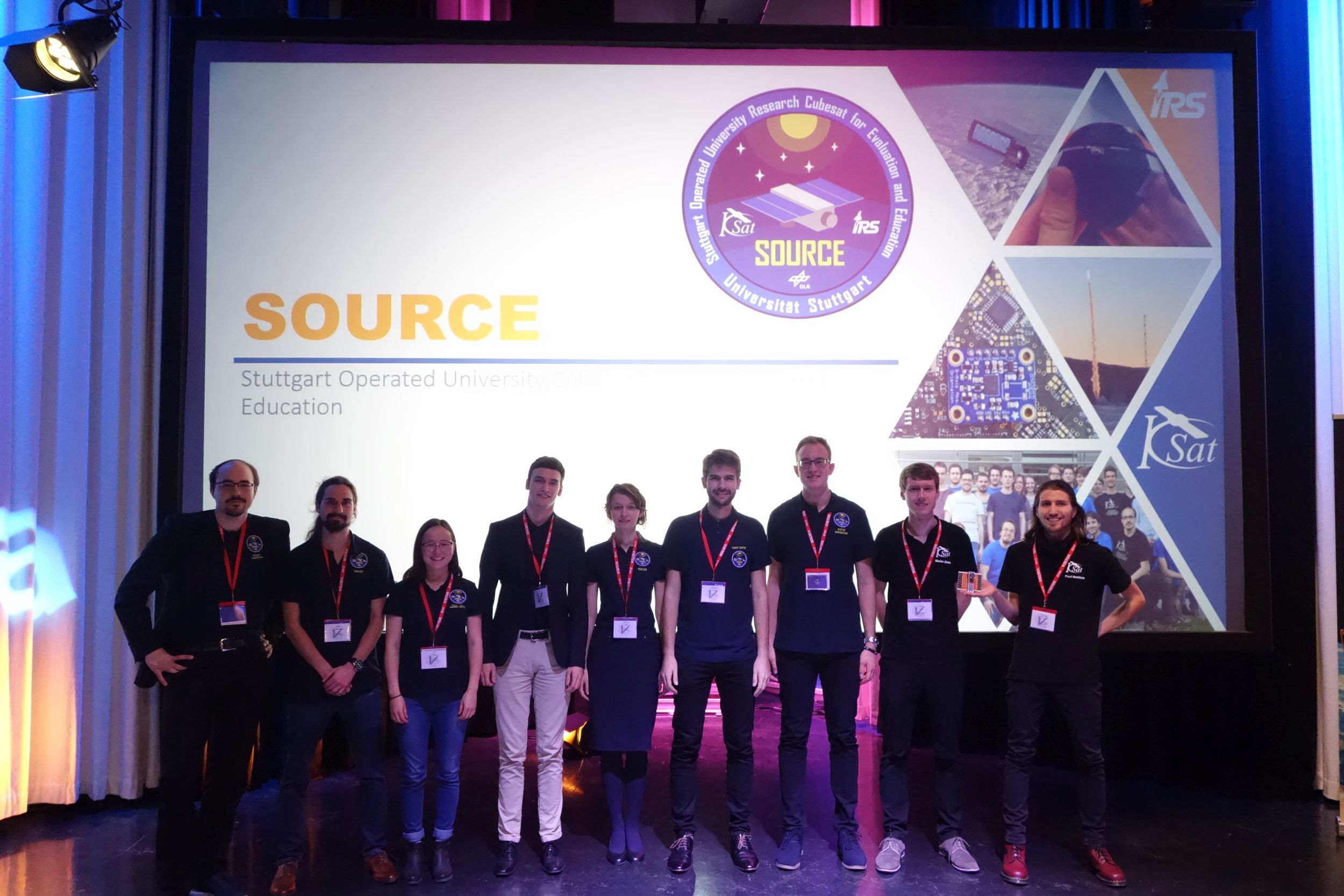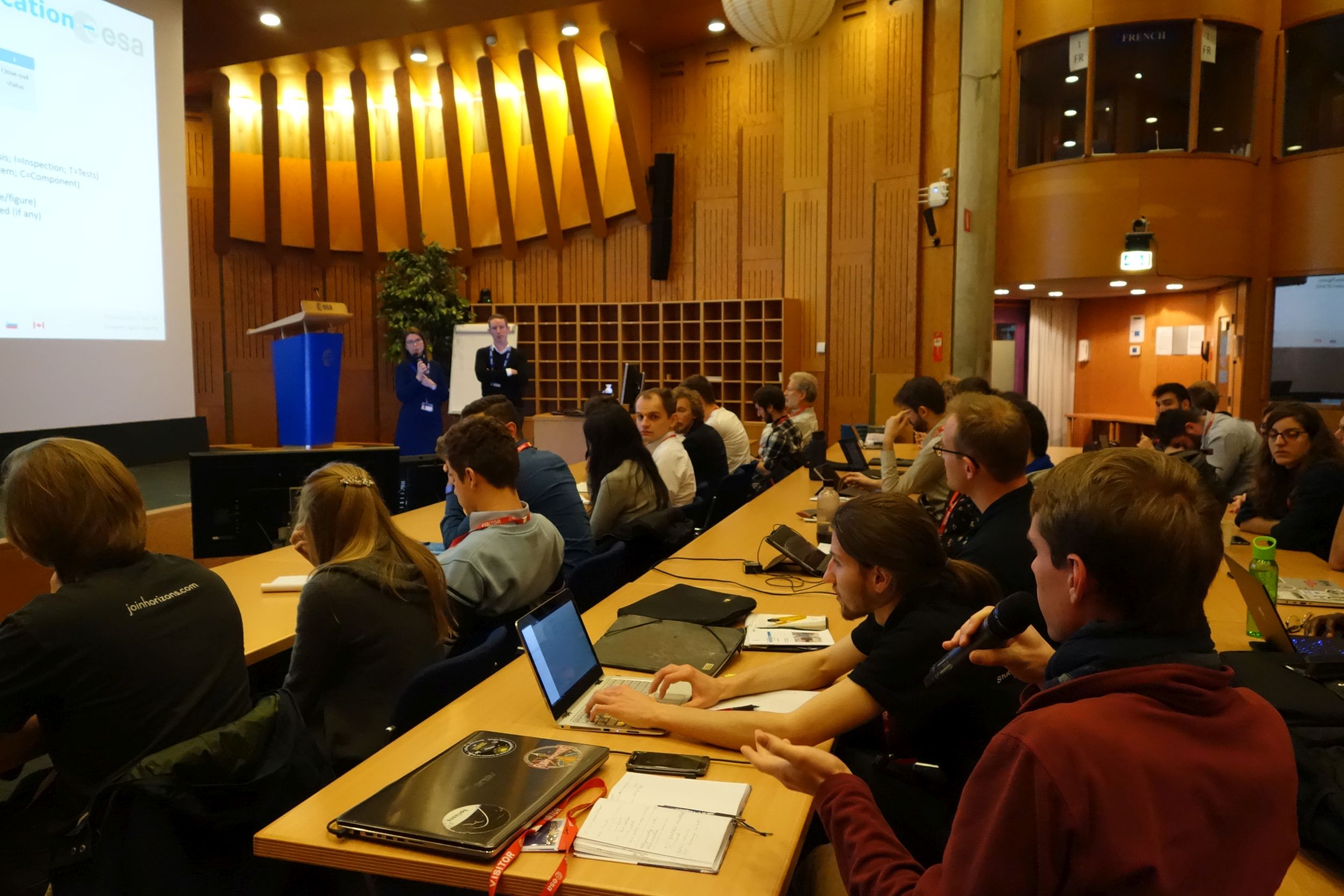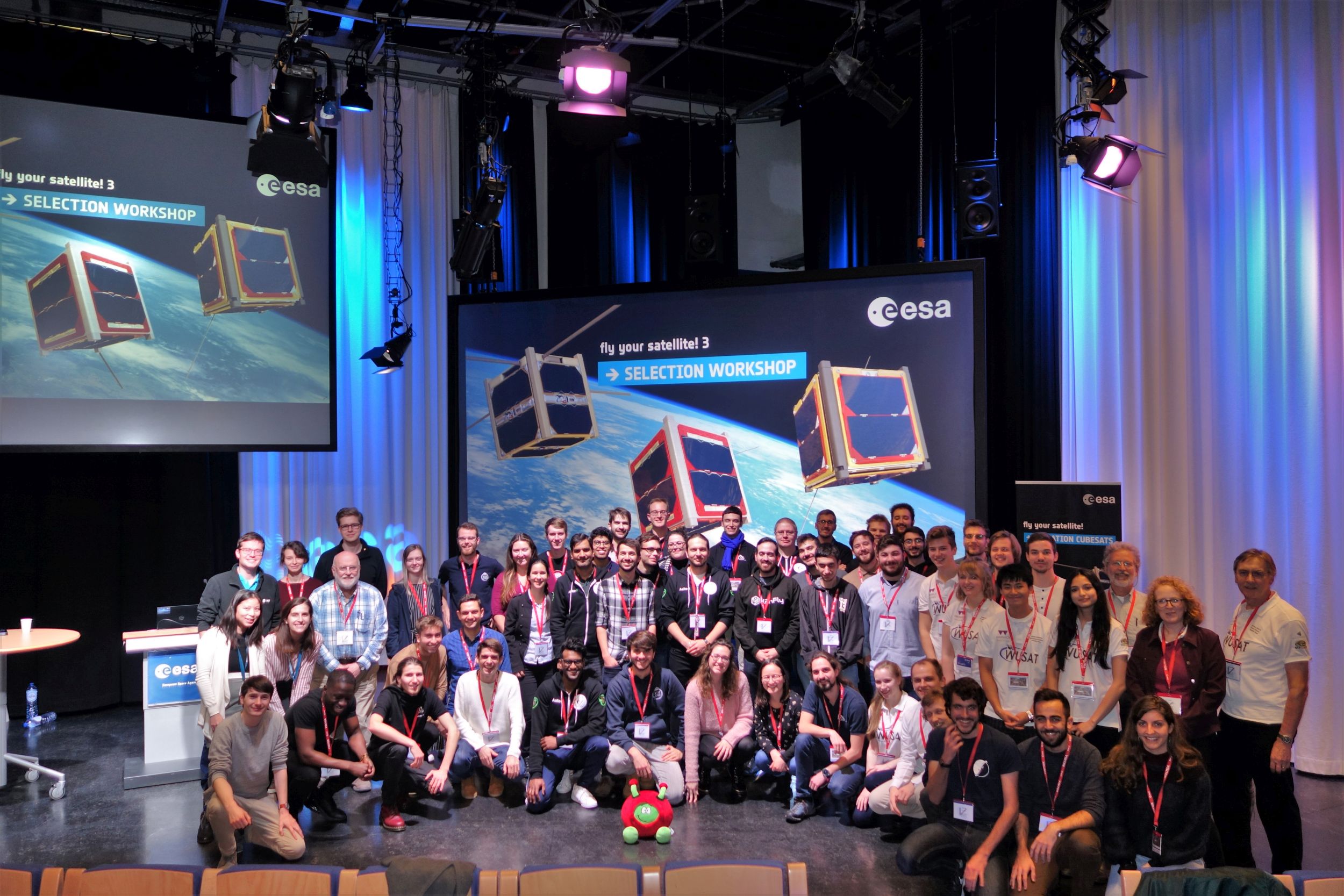On the way to its first satellite in orbit, the Small Satellite Student Society of the University of Stuttgart, KSat e.V., has taken a major step. In December nine students of the 70-strong team participated in the selection workshop for the Fly Your Satellite! program at the ESTEC research centre in the Netherlands. There they were able to convince experts from the European Space Agency (ESA) with their work to date and were accepted into the program along with two other satellite projects!
KSat had already designed a re-entry capsule with MIRKA2 and a spacecraft maintenance robot with ROACH (both as part of the German-Swedish REXUS/BEXUS programme – also supported the ESA Education Office). With PAPELL the group was able to carry out an experiment on the International Space Station on the behaviour of magnetic fluids. All three series of experiments have the potential to one day carry out important tasks on satellites and other spacecraft.
However, the university group has so far lacked the small satellite that gave them their name. At the end of 2017 long-standing members together with the executive board made the decision to change that: After the successful missions as a payload on REXUS rockets and the ISS and the lessons learned from these, the first self-sufficient small satellite was now to be built.
The ambitious project started with four students and the Institute of Space Systems (IRS) at the University of Stuttgart. Even if the satellite was to be built independently and exclusively by students, this could not be achieved without the expertise and support of the IRS, they agreed. With the Flying Laptop, the IRS had already built the first small satellite at the University of Stuttgart. The Flying Laptop has been successfully operating in orbit since June 2017.
The partnership between KSat and the IRS is by no means new; the IRS has always been a supporter and benefactor and at the same time a valuable critic. But this time the cooperation was to go further. Each part of the satellite, called subsystem, is supervised and advised by a PhD student from the institute. In the course of this, students are also able to count their work on the project towards their academic degrees. After a short name search, the name SOURCE, Stuttgart One Unit Research Cubesat for Education, was selected. KSat chose Annika Stier and Robin Schweigert as team leaders for the project, the IRS provided Michael Lengowski, an experienced satellite builder, as project coordinator. In the 2018 summer semester KSat's largest project to date and the lecture "Practise Course CubeSat Technology" could start. The declared goal was the design, construction and operation of a 1-unit CubeSat. A CubeSat is a standard for microsatellites, built of cubes 10x10x10 cm in size and a weight of 1 kg each, called units. For comparison, the Flying Laptop of the IRS weighs over 100 kg and had the dimensions of a washing machine.
Now that the basic conditions had been defined, the team could turn to the first important question: How do you build a satellite?
In their studies they learned all the important basics of their subjects. A student knows the most important equations for calculating an orbit, knows which phases a space mission goes through, knows manufacturing processes and the physics behind radio technology, thermal simulation and attitude control. SOURCE is the first time many students apply these tools.
Ambitious Schedule and Rapid Progress
A weekly meeting becomes the centre of the project. The first meetings resemble a lecture: IRS staff present a crash course in satellite technology to give the students an overview of what needs to be done. From the third week onwards, the meetings are more reminiscent of plenary sessions, in which the subsystem groups present their progress and plans and try to coordinate them with those of the others.
The payload group would like to install a camera to determine the satellite's attitude from the starry sky. The choice is a special image sensor that can only be connected via USB3.0 or a Gigabit network. The search of the group "On Board Computer & Data Handling" for a main computer with a corresponding connection ends without result. Either the necessary interface is missing or the required Space Heritage - meaning the component has never been in space before. For the critical main computer, however, it is essential to choose a model that has "already flown". This is the only way to be certain that vacuum and cosmic radiation will not immediately destroy the component.
After months of research and consideration, an additional computer, which is only used for the camera, is agreed upon. The system comes from the automotive industry and provides the necessary interface - but how reliable it will be in space will only become clear after launch. This is a risk the team is willing to take. A failure would mean the loss of the experiment - but would not endanger the satellite.
After the first semester, the requirements for the satellite are fixed. KSat and the IRS invite internal and external experts from the industry, so-called reviewers, who look at the students' work, criticize it and finally, after some corrections, declare Phase A as passed. This process is to be repeated every semester.
The satellite has grown, one unit has become three. Various new payloads have been added in cooperation with industrial partners. The new name "Stuttgart Operated University Re-search CubeSat for Evaluation & Education" has been agreed upon.
In February 2019 the preliminary satellite design is up for discussion at the second review. The reviewers carefully examine the documentation and present a list of almost 200 points of criticism. After extensive follow-up work, which would last until July, the OK is given to declare Phase B as completed.
New Schedule and new Momentum
With delay due to the follow-up work, the original ambitious timetable can no longer be maintained. The now almost 50 students are becoming increasingly aware that the effort involved in building a satellite has been underestimated. Furthermore very few new students join the team for the 2019 summer semester.
To counteract the slump, the team management now has two systems engineers at its side. All subsystems now have group leaders to coordinate the distribution of work in the group and to coordinate with other subsystems in weekly meetings. The weekly overall meetings are increasingly being skipped in favor of workshop days. On these Mondays, if possible all participants meet and work together for a good eight hours in a lecture hall. Phase C is extended and should now last two semesters and not be completed until spring 2020. During a consultation with a very experienced member of staff from the IRS electronics workshop, he comments that he was convinced that SOURCE would work and fly one day, just not on the original schedule.
State of Affairs Autumn 2019
A third review follows in autumn of 2019, in which only an intermediate status "C1" is shown. The documentation has now reached almost 400 pages in length. To great joy of all involved, the tide has turned again. The feedback is extremely positive, the significant progress is highlighted and the professionalism of the students work emphasized. The turnaround seems to have been achieved, and at exactly the right time. With the "Fly Your Satellite!" programme, ESA Education offers student satellite projects the rare opportunity to test, qualify and fly their satellite together with ESA experts. For SOURCE this is a unique opportunity: To professionally carry out the tests of the satellite and thus qualify it for a launch into space are major challenges where ESA's support is more than welcome.
The deadline for submission of the application only a few weeks after the review requires full commitment and sometimes night shifts from all parties involved. Late in the evening of the 13th of October, the team leaders upload the finished document.
With over 20 registrations for the course and 15 more interested students, phase C2 is starting with a strengthened team. "We had so many people interested in a place in the structures and thermal subsystem that for the first time we had to disappoint some students - but only because they are picky with their tasks, in the other seven subsystems further helpers are still welcome".
The chairwoman of KSat e.V., Franziska Hild, is pleased about the lively interest that all projects received in 2019: "We are more diverse than ever before". In addition to students of aerospace engineering, the participants increasingly include students of computer science, electrical engineering, physics, simulation technology and social sciences. She continues: "Space travel is not an isolated field, but an application of many diverse disciplines.”
"A great experiment is of little use if the communication fails, the control software breaks down or the power goes out", Michael Lengowski begins the introduction for the new SOURCE members. From the ground, all three cases would look the same: No signal. "That's why we have to design our satellite to be robust and above all test, test and test".
Selection Workshop for the ESA programme Fly your Satellite!
On November 7th, the project management receives the good news: "We will be at the selection workshop for Fly Your Satellite!" project coordinator Daniel Galla writes in the project chat.
In this selection process, a delegation of four students from each applicant team is invited to the ESA ESTEC research centre in the Netherlands. Five more travel at their own expense. At the end of the process, the expenses are evenly divided between all of them.
In a presentation followed by a question and answer session, the students face the ESA experts. Here will be determined whether SOURCE can prevail against the European competition. Who has the most exciting experiments on board? Which team can show that it is capable of successfully constructing its satellite? To secure the financing for the construction? "The fact that we are allowed to participate in the Selection Workshop is already a huge success," says project leader Annika Stier happily. Not all teams from Germany, Austria, Sweden, Spain, Greece, Finland and Great Britain will be accepted into the coveted program.
After a full day of presentations from every attending team the rest of the week is spent with lectures from ESA specialists in all areas of satellite design. The team receives a wealth of helpful information and, even more importantly, an opportunity to directly discuss their current challenges with some of the top experts in these fields. At the end of the week the team goes back to Stuttgart to continue working on the satellite.
Then, at the end of February the eagerly awaited confirmation comes in: "The message from ESA just came in: We have been accepted into Fly Your Satellite!. Congratulations to all of you, this would've never been possible without your work and perseverance", the team leader writes in the group chat. Professor Sabine Klinkner also offers her congratulations: “It was a great team effort to prepare the documentation for ESA and to present SOURCE in such a compelling way on site. Many thanks to all for the amazing commitment!”
There is a lot more work to do and many challenges to overcome for the SOURCE team before they can launch their spacecraft. But with a large motivated team and the now secured support from ESA everyone feels it really is now a matter of when, not if, it will fly.
What is KSat?
The Small Satellite Student Society of the University of Stuttgart was founded in 2014 by aerospace engineering students. It enables students to work on real space missions during their studies and thus gain practical experience. KSat organizes conferences and design competitions and creates platforms for exchange and cooperation between students, institutes and industrial partners. KSat is recognised as a university group and registered as an association.
What is the IRS?
The Institute for Space Systems at the University of Stuttgart
SOURCE Fact Sheet
Size: 3U+ (10x10x36 cm)
Start of Development: 2018
Planned Launch: 2021 / 2022
Team: 70 students, advised by PhD students from the IRS
Team Structure
Project Leaders: Annika Stier, Robin Schweigert
IRS Project Coordination: Daniel Galla, Michael Lengowski
Systems Engineers: Adrian Causevic, Klemens Boltenhagen
Subsystems: Attitude Control (ACS), Power (EPS), Communications (COM), On-Board Datahandling (OBDH), Structures and Thermal (S&T), Simulation and Testbed (Sim), Payload (PL), Operations and Ground (Ops)
Payloads: Meteor-, star and horizon camera (MeSH-Cam), sensors for heat flux and pressure, photodiodes, atomic oxygen sensors (FIPEX), 3D-printed sandwich structure with embedded electronics, smart heaters, thin film solar cells, earth observation camera
More Information
The SOURCE project is carried out with the support of the Education Office of the European Space Agency, under the educational Fly your Satellite! Programme.
